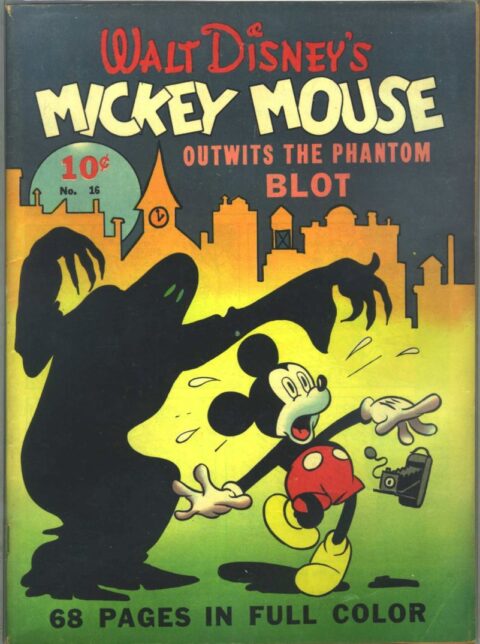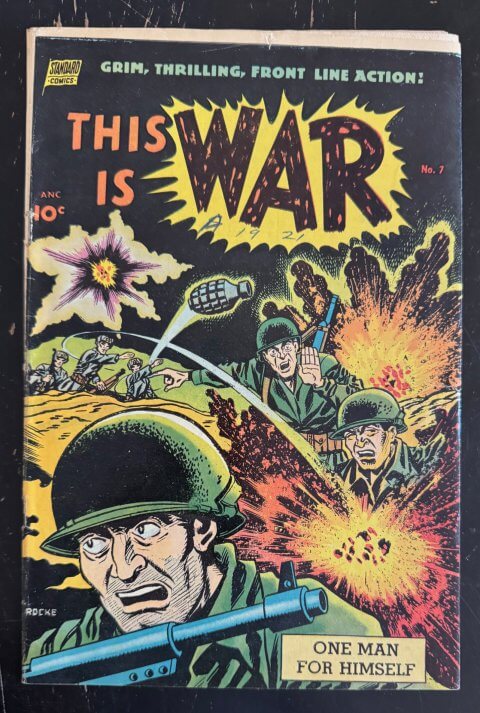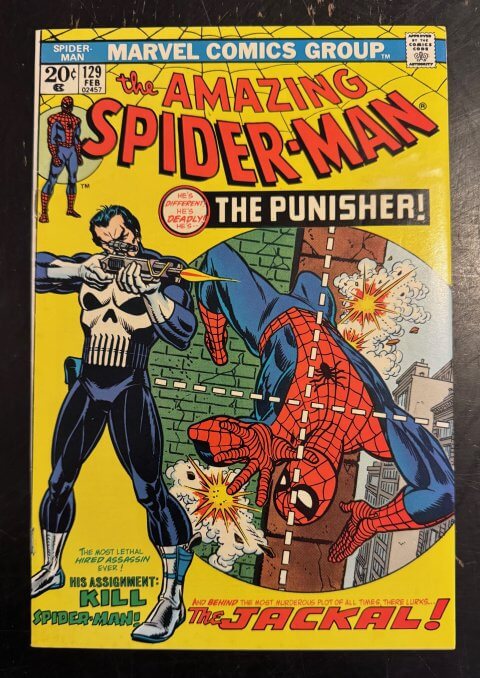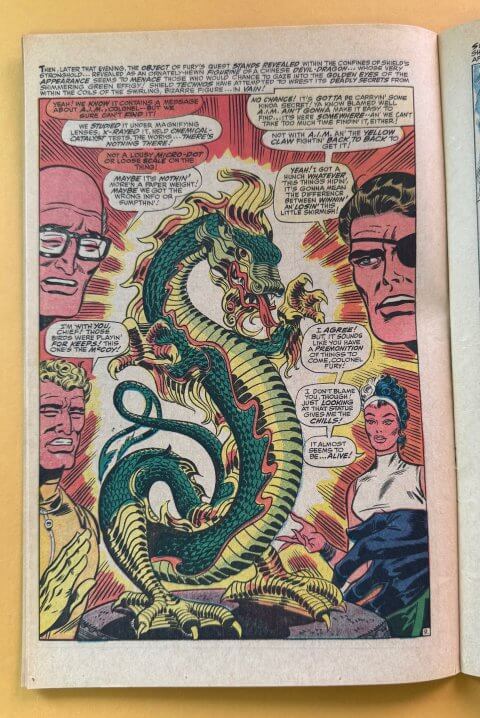
A few weeks ago I posted about how slow and neglected the Western genre was and asked what would it take to reignite general interest. This week I want to look at that other slow and neglected genre, Funny Animal Comics.
When I started peddling comics for extra pocket change back in the early 80s Funny Animal Comics were a big deal. In the 1980 Guide, 11 of the 50 most valuable comics were Funny Animal Comics. Fast forward to the 2020 Guide and we have 0 in the top 50, and only 2 in the top 100 (actually 3 since we should could Four Color #16 which only gives a VF 8.0 price).
I don’t even scratch the surface of being smart enough to know why and how this drastic slide in interest and relative value happened but luckily for this post, I’m plenty dumb enough to try and offer up some suggestions.
First off, the early Guide values were misguided based on the fact that these comics represented comic book adaptations of characters created in other media. Think about Conan, Scooby-Doo and Star Wars, here we see hot comics with good value but just not the value of first comic appearances that were also actual first appearances, characters like Ghost Rider, Punisher etc. There is a premium realized when the comic book represents the actual first appearance and none of the big keys of the Funny Animal books can deliver this.
Then there is relevance. Being the cat’s meow or even the bee’s knees back in the day doesn’t guarantee you a following today, just ask Tarzan or The Spectre. Somehow characters like Mickey Mouse never made those crucial generational jumps the way characters like Batman and Spider-Man did. Why not? I have no idea. I think the Chuck Jones Warner Brother cartoons of the 1950s were the greatest cartoons ever created, ever. So why does the next generation of kids gravitate to new cartoon characters? Ask the Flintstones because I don’t know and truth be told I don’t even think Fred or Barney know.
We can’t sustain and grow strong demand, which we need to sustain strong and grow value if the characters have little social and cultural relevance to the people collecting and creating demand. I’ve said this before, Disney, the biggest entertainment company in the world, has a mouse ears logo that is lost on most of the kids today.
Yeah but what about the weight of the pedigree, those beautiful books that have withstood the test of time? I’d say that’s whats still giving the books the value they enjoy today though I do think there is a bit farther to fall relative to the other genres in comics (save Westerns).
Will there be a time when the Funny Animal genre heats up? When all those great Golden Age books start getting scooped up quickly and for stronger prices?
For Westerns, I said it would start with the covers and I think the same for Funny Animal books. There are some great covers in the genre and I can see the demand for them growing, actually is already. I also think scarcity of grade is another area where we can see stronger demand. These books sold like crazy back in the day and most copied are beat up, I can see high-grade copies of even the run issues enjoying some growth in value.
Could movies help, new TV shows? New comics? Marvel tried to resurrect Ziggy Pig about a year or so ago, I don’t think the project went anywhere.
It hardly seems fair, Donald Duck and Bugs Bunny not mattering anymore after everything that they’ve given us. This comic business is a tough racket!
Are there any Funny Animal books you think are undervalued? Do you think we’ll ever see stronger demand for these old classics?




Supply and demand. Let’s start with the most popular of all Funny Animal comics, the Disney characters…Mickey Mouse, and most especially The Duck family, including Uncle Scrooge, by Carl Barks.
I would say the keys to the puzzle of why these are not so popular today, is
1) these were VERY popular comics and except for the earliest issues, they sold lots and lots of copies. So there is still an abundance of copies available…with exceptions of very earliest issues and some high grade, these are easy to find…supply outstripping demand. Even Uncle Scrooge, by the 4th or 5th issues, they must have been HUGE sellers. These are abundant today, very easy to find. A zilion households subscribed to Walt Disney’s Comics and Stories….copies with imprinted addresses on them date back to the big subscriotion drives that Dell promoted in the mid-1940s on. And you can find subscription copies, that evidently mailed flat with NO envelope or wrapper, in pretty nice shape. It was a kinder, gentler Post Office in those days. My own family had a subscription beginning around 1958 or so, introducing me to Barks’ stories. By the mid-sixties, my buddies and I were collecting Barks, and they were abundant at .25 a copy, .50 for earlier issues, late forties and early fifties issues. Only the ealiest Four Colors got a premium.
2) the Disney tie-in helped to preserve copies, because new generations brought up on Disney made sure these were not tossed out…an unfortunate aspect of Canada’s own WECA comics, which had no characters carrying on past 1946 or so, and became yesterday’s news and went into trash bins.
3) the best of this work has been reprinted, and reprinted, and reprinted. The Barks stories have rarely fallen out of print, even reprinted in later issues of their own titles…Walt Disney’s Comics and Stories, Uncle Scrooge (they began reprinting Barks in US in 1966!). Then there were the Barks Libraries, then Gladstone’s Color albums, series, more comics from first Whitman, then Another Rainbow, and today Fantagraphics is doing it all again with $30 books, now up to 22 volumes.
4) overabundance of material…the Disney characters are so popular, there were not only foreign reprints, but also original stories done in other countries, Europe, especially in Denmark and Italy. At least some of this was translated and appeared in regular U.S. comics. Even more material to collect. Again, Fantagraphics is now is collecting these in their Disney Masters series. I handle these, but interest is only nominal. I think most of the veteran collectors are happy with their Barks stories. The current Fantagraphics Barks reprint series sells pretty well, but the market saturates pretty quickly and older releases in the series slow down quickly. Again, older collectors have this material in other reprint series. New generations may find the $30 a book price tag a bit offputting. They aren’t .10 comics anymore.
5) Why buy the original comics when abundant reprints exist? Like today’s internet, providing so many rare old images to new or even veteran fans, having the published appearance is no longer so important. On the internet, it’s free. In reprint collections, it’s cheap and readily available in the after market, often at half cover price for collections. Older comics fans have slowly given up collecting original Golden Age material across the board (ask Michelle Nolan, or Roy Thomas), particularly runs of titles, when you can so easily and cheaply collect Archives, Marvel Masterworks, or today’s latest manifestation, Omnibus editions. You can’t read those rare comics in bed, or even with your kids…but you can do that with an archive edition.
The abundance of EC reprints, beginning with the East Coast Comics series in the early 1970s, got much of EC’s library out to fans cheaply. It never completely stopped interest in the originals, but prices very clearly hit a plateau for many years, as demand was satisfied with reprints. And another point, in regards to EC’s, the original printing was often pretty muddy and sometimes off-register, once you got past the well-printed glossy covers.
The next best funny animal group, in my eyes, would be Walt Kelly’s work. Or as Walter points out, the Warner Brothers crew. Many of the same points apply to Kelly’s Pogo comics, so I won’t belabor that. Popular, abundant, saved. His other comics are fabulous, but somewhat lost in Four Color series of over 1300 varying titles.
There’s Kelly’s Christmas and Easter specials, and my own particular favorite series, Fairy Tale Parade. This actually did BEGIN as its own series in 1942, and then moved back into the Four Colors for the final issues, the reverse of what Dell normally did, where Four Color success stories became their own series. These are still bargains. I have two complete sets, one hardbound, from Dell employee, Zetta DeVoe.
Even today, these superb issues (and Kelly’s other pre-Pogo work) has only been collected in three best-of books, nowhere near in their entirety. Our Gang, which is not funny animal, was attempted by Fantagraphics but they never caught on. I don’t think they don’t hold up well, not to mention politically incorrect black characters.
Bugs and the Warner Brothers crew, in comics, just haven’t caught on with later generations. Again, being Dell, they sold very well and there are lots of copies around. Only the first few Looney Tunes are scarce. By #20 or so, they are easy to find and the title ran forever, like WDC&S. They are also pretty much mostly the same. They don’t have strong creators that made a body of work that is consistently superior, such as the Barks ducks or the Walt Kelly titles. Dozens of anonymous creators were involved, and quality varied. I only collect the earliest of these, for the adventure stories that imitated what Barks did with the Ducks. Later issues, I pick up for the Bugs Bunny cover gags, but never bother to read them.
Floyd Gottfredson’s work on Mickey Mouse is one exception to the Anonymous and over abundance problem. But this work now dates back to the 1930s, and again can suffer from politically incorrect stories. It was never reprinted anything like the Barks work; perhaps the era it comes from is just too long ago. I for one am a huge Barks fan and can reread any of these stories today, and try and pass them on to my kids and my kid’s kids. But I have never had that same love for Gottfredsson’s work, though I know other fans do. I appreciate it, but it’s never quite rung my bell.
It’s a big field and I have only touched on the most popular works here. I look forward to hearing everyone else’s take.
The Bugs Bunny comics could never hold a candle to the classic cartoons, so they were never a serious collectible. Most of the funny animal comics were written for small children with limited appeal to adult collectors. The exception was always the great Barks duck comics, which far exceeded their animated counterparts and had numerous characters that originated in the comics before they went to the screen (Uncle Scrooge, Beagle Boys, Junior Woodchucks, etc.). Years ago these could command prices to rival superheroes, but now, except for early and key issues, they are really hard to sell. I would have thought that the success of Duck Tales would have bolstered the market, but it didn’t. Ultimately it comes down to nostalgia. People under the age of forty did not grow up reading these comics, so they are not paying big bucks for it now.
I have always loved funny animal comics although I don’t have very many. For a long time they seemed pricey and now I am at a point where I am very picky as to what I do want and most need great covers. The Duck stuff often does, although Dell had artists resort to plain colored backgrounds in the 50’s and early 60’s which don’t thrill me. My kids actually love the Disney stuff when they see my collection. They fondly tell me they grew up learning to read with the Duck stories ( Don DeRosa era) and Archie! I am one that also loves Gottfredson’s stuff! Last winter I purchased the Phantom Blot story in book form! Barks however stands supreme with stories of humor and adventure! It is a shame there are not more ‘kid’ comics available, I would gladly give them out for Halloween ( if the is a Halloween this year). Comics at $5 a pop tho make it difficult and my cull box isn’t necessarily that accessible to the smaller kids who would get a kick out of funny animals even if they couldn’t read the words!
Good points Bud and I do understand that there is a lot of supply but couple that with little demand and we have Golden Age comics in the $5 bins.
The consensus seems to be Carl Barks, perhaps he’ll lead the resurgence in collector interest.
Funny thing, as much as I have always loved funny animal comics, I have never really “collected” them, just had a good read then passed them on to smaller folk.Out of curiosity I dove into my collection to see what was left and only came up with a Canadian edition of Barks’ Luck of the North and the only two issues of Air Pirates which, due to the adult nature of these infamous undergrounds, are definitely not for the kiddies. Having said that, I remember many issues of ducks and Pogo that have passed through my hands over the years. The Warner Brothers and Walter Lantz titles never really grabbed me for some reason. You’ve got me thinking about a new avenue of collecting though!
maybe because the funny animals did not change or grow along with the original readers.
the marvel and dc characters grew with the readers, and now the target audience is middle age. these target people have the most money to burn.
although i love disney stuff and get nostalgic for simpler times.